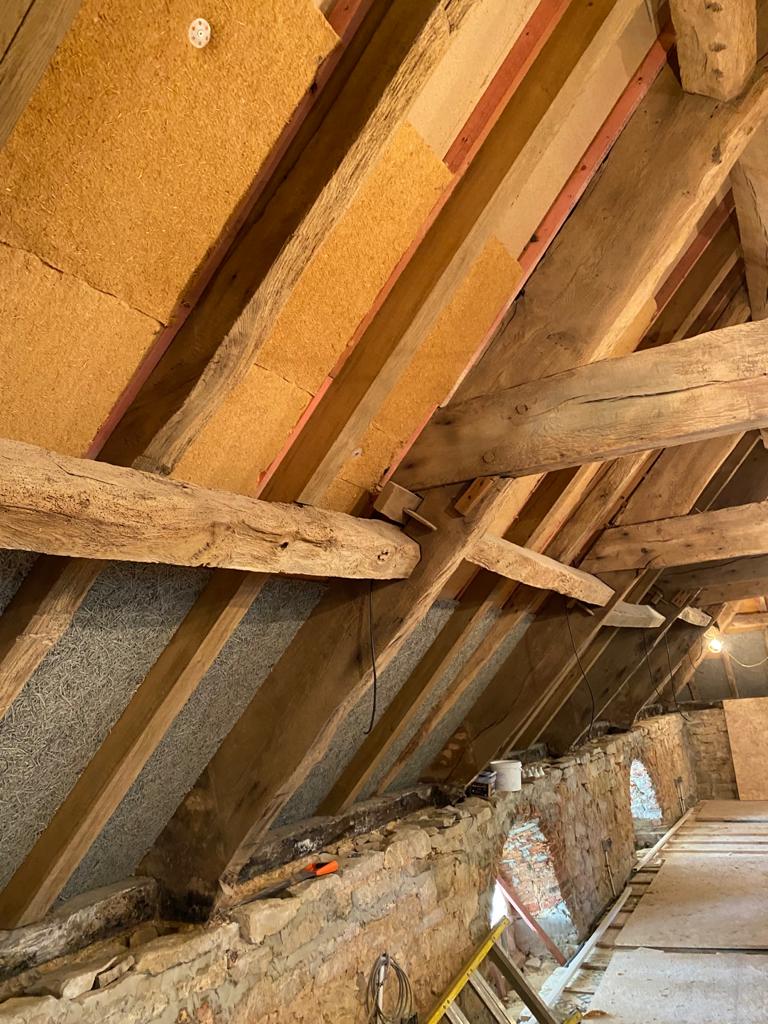Thermal Insulation: Energy Efficiency
Thermal insulation ensures protection against both cold and warm temperatures, resulting in a reduction in energy use, and is a significant environmental benefit. In addition, the right thermal insulation saves the building occupant money.
The performance of insulation materials depends on several factors, the most important being:
- the lambda value tells you more about the ease with which heat can travel through a material by conduction (thermal conductivity). The lower the lambda value, the better the insulation properties.
- the U-value, in turn, describes how well or how badly a building component transmits heat. Again, the lower the U-value, the better the component’s insulation properties.
- the specific heat capacity refers to the amount of heat needed to raise the temperature of 1 kg of the material by 1K (or by 1°C).
- the R-value denotes thermal resistance. The higher the R-value, the better the material resists heat flow (thermal resistance).
- the density or mass per unit volume, expressed in kg/m3.
- the thermal diffusivity or the ability of a material to conduct thermal energy relative to its ability to store thermal energy.
- the vapour permeability: the extent to which a material permits the passage of water.
- long term water absorption by immersion.
- the compressive strength or the material’s capacity to withstand loads.
- the dimensional stability: the extent to which the insulation material retains its original dimensions when subjected to, for instance, temperature changes.
- the reaction-to-fire performance (the common EU standard for assessing the qualities of insulation (and other building) materials in the event of fire is called Euroclass: a system with seven classification levels pertaining to ignitability, heat release, flame spread, smoke production, and so forth).
Building Regulations: Insulation Standards
Thermal Insualtion
Approved Document L lists the standards in England for the energy performance of new and existing buildings. It consists of four parts: L1A, L1B, L2A and L2B.
1. Approved Document L1A, titled ‘Conservation of fuel and power in new dwellings’, introduced the Target Fabric Energy Efficiency (TFEE) rate. The TFEE indicates the minimum energy performance requirement for a new dwelling and is expressed as the amount of energy demand in units of kilowatt-hours per square metre of floor area.³


2. Approved Document L1B provides guidance on the conservation of fuel and power in existing dwellings, including regulations on boiler productivity, lighting, hot water storage techniques and insulation.⁴


3. Approved Document L2A covers new buildings other than dwellings.
4. Approved Document L2B covers existing buildings other than dwellings.
Credit:www.soprema.co.uk

